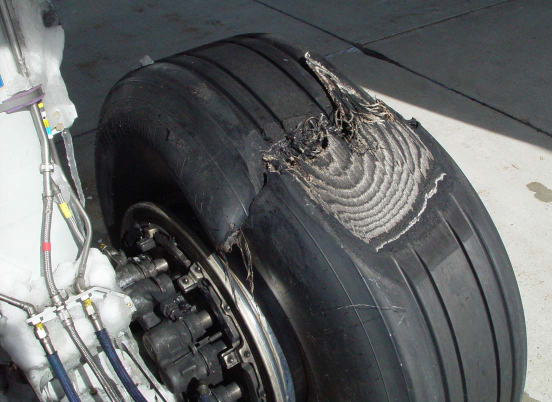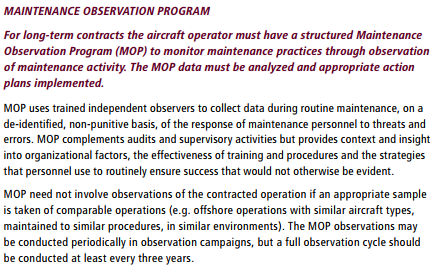NTSB Confirms United Airlines Maintenance Error After 12 Years (Airbus A320 N442UA at Jackson Hole 2008)
On 25 February 2008 United Airlines Airbus A320 N442UA left the right side of Runway 19 during landing at Jackson Hole Airport (JAC), Wyoming. The NTSB determined in 2020(!) this serious incident was due to “inadequate maintenance” during a prior landing gear tachometer installation. This was the third United Airlines tachometer cross-connection maintenance error to emerge between October 2007 and March 2008.
Incident Flight
The US National Transportation Safety Board (NTSB) reported on 30 March 2020 that…
..the takeoff [from Denver International Airport (DEN), Colorado], climb, cruise and descent to JAC was normal. The captain was the flying pilot. During the approach briefing it was noted that the Mu readings indicated “good” breaking and that if the airplane did not touchdown in the first 2,000 feet of runway, they would perform a go-around.
The captain stated that the touchdown was “firm” and the speedbrakes auto-deployed quickly; he believed that the airplane touched down in the first 2,000 feet of runway. The deceleration was normal until the airplane reached about 80 knots and 2,000 feet from the end of the runway when it started to slide. At that time, the captain stated that he applied maximum manual braking and the airplane started to slide toward the right side of the runway. The captain applied maximum left rudder, maximum braking, and reverse thrust as the airplane exited the right side of the end of the runway. The airplane came to rest against snow banks.
The first officer said that the engines “flamed out” when they ingested snow. As the flight crew was shutting off the engine fuel levers and were getting out of their seats, they heard a passenger yell “fire” and the passengers began a self-initiated evacuation of the airplane.
The 119 passengers and 6 crew members evacuated the aircraft via the emergency slides. One passenger received minor injuries during the evacuation.
Examination of the runway revealed distinct rubber transfer marks leading to an area of disturbed snow on the right side of the runway.
The Left MLG inboard tire exhibited a large flat spot with a rupture through the aft end from sidewall to sidewall.
Maintenance History
According to United Airlines, both MLG and the nose landing gear were replaced on the airplane on February 2, 2008 due to approaching overhaul time limits. The left-hand main landing gear was an “enhanced” landing gear and the right-hand landing gear was a standard or “pre-enhanced” landing gear. According to Airbus, the Service Bulletin to retrofit an airplane with the “enhanced” gear required they only be replaced as a set and that installation of a “mixed” configuration would only be approved on a case-by-case basis. United Airlines was unaware that two different types of landing gear were installed on the airplane and there were no records indicating that a request was made to install a “mixed” set of gear on the incident airplane.
United Airlines contracted with Hawker Pacific Aerospace to overhaul its A320/A319 landing gears. Review of records and interviews of United and Hawker Pacific personnel revealed…all work was accomplished using United Airlines Joint Documents and Messier-Dowty Component Maintenance Manuals. The wiring harnesses of the landing gear are overhauled at this time and installed into the overhauled Hawker Pacific gear components.
During the landing gear installation, United Airlines personnel installed the tachometers to the overhauled landing gear prior to the gear being installed on the airplane. Interviews and review of the maintenance documents noted that the Maintenance Manual and task cards were not clear when specifying the correct position for the MLG wheel tachometers installation. In addition, the mechanic who installed all four tachometers had never installed one before, but indicted that a coworker, who had experience, guide him through the process if he had questions. He indicated he had no issues with the installation.
The…installation of the landing gears…required that a full check of the landing gear systems be accomplished. Records showed all required tasks had been accomplished and properly signed off and that that a functional test of the tachometers was accomplished with no discrepancies noted. During interviews, maintenance personnel noted that the functional spin up test for the tachometers was complex and could be confusing at times.
After the incident, United Airlines accomplished a functional check of the tachometers on three airplanes that had gone through gear changes between the October 2007 incident and February 2008 incident. There were no discrepancies found with any of the airplanes.
Previous Occurrence (2007)
This was not the first time tachometer maintenance had been involved in such an occurrence at United Airlines:
On October 9, 2007…A320-232, N431UA, received minor damage when it exited runway 22R and impacted runway lighting while landing at the O’Hare International Airport (KORD), Chicago, Illinois. Of the 125 passengers and crew onboard, one flight attendant and one passenger reported minor injuries.
The vendor that performed the scheduled maintenance indicated that their personnel did not understand that the built in test equipment test they performed did not check for cross-wired tachometers. A different specified test called out in the airplane maintenance manual and in an operator’s reference document indicated this specified check would verify a cross-wired condition.
The operator reported that the reference documentation associated with the scheduled maintenance involving both of the left main landing gear’s tachometers was unclear and that the procedure for that maintenance was revised.
A resulting fleet check at the time identified a further example. The report on that incident was published by NTSB 24 December 2008, after just 15 months.
NTSB Probable Cause
The Probable Cause of the 2008 serious incident was:
The loss of braking action on the left main landing gear due to the cross connection of the wheel speed tachometer wires that was caused by inadequate maintenance performed on the airplane during the installation of the main landing gear.
We know the cross connection was in the public domain on 1 April 2008 so its not clear why the 12-year delay publishing the probable cause occurred.
United Airlines Safety Actions
NTSB report that:
Subsequent to the incident, United Airlines made numerous modifications to their maintenance program regarding the MLG wheel speed transducers, including changes to their FOQA monitoring program, receiving inspection paperwork, installation procedures, inspection procedures, and functional test procedures.
The prompt publishing of this report NTSB report may have helped another operator make similar improvements.
Other Safety Resources
- United Airlines Suffers from ED (Error Dysfunction)
- Maintenance Human Factors: The Next Generation
- Airworthiness Matters: Next Generation Maintenance Human Factors
- B1900D Emergency Landing: Maintenance Standards & Practices
- Rockets Sleds, Steamships and Human Factors: Murphy’s Law or Holt’s Law?
- Critical Maintenance Tasks: EASA Part-M & -145 Change
- Crossed Wires: Online Maintenance Human Factors Training Video
- When Down Is Up: 747 Actuator Installation Incident
- Lost in Translation: Misrigged Main Landing Gear
- Maintenance Human Factors in Finnish F406 Landing Gear Collapse
- Insecure Pitch Link Fatal R44 Accident
- FAA Rules Applied: So Misrigged Flying Controls Undetected in an accident to a Cessna 172 in Bermuda.
- ATR72 VH-FVR Missed Damage: Maintenance Lessons Unclear communications, shift handover & roles and responsibilities, complacency about fatigue and failure to use access equipment all feature in this serious incident.
- ‘Crazy’ KC-10 Boom Loss: Informal Maintenance Shift Handovers and Skipped Tasks
- Dash 8 Q400 Return to Base After Pitot System Contaminated By Unapproved Test Kit Lubricant
- ERJ-190 Flying Control Rigging Error
- Luftwaffe VVIP Global 5000 Written Off After Flying Control Assembly Error
- UPDATE 23 April 2020: Poor Painting Prevents Proper Performance: Shorts Sherpa NLG Collapse
- UPDATE 6 May 2020: CFM56-7 HPC Titanium Fire Due to VSV Maintenance Assembly Error (United Boeing 737-924)
- UPDATE 10 June 2020: B767 Fire and Uncommanded Evacuation After Lockwire Omitted
- UPDATE 16 June 2020: CRJ-200 Landing Incident Highlighted US Maintenance Competency Inadequacies
- UPDATE 10 November 2020: King Air 100 Uncontained TPE331-6 Failure – Inappropriate Repair Scheme
- UPDATE 15 March 2021: ATR 72 Rudder Travel Limitation Unit Incident: Latent Potential for Misassembly Meets Commercial Pressure
- UPDATE 22 September 2021: Brake Failure Causes PA-31 Runway Excursion During Taxi
Human error is not itself a cause, but merely the start of a human factors investigation, as explained by Sidney Dekker in The Field Guide to Understanding Human Error – A Review (discussed in this book review The Field Guide to Understanding Human Error to the RAeS).
Flight Safety Foundation BARS Maintenance Observation Programme (MOP)
Aerossurance worked with the Flight Safety Foundation (FSF) to create a Maintenance Observation Program (MOP) requirement for their contractible BARSOHO offshore helicopter Safety Performance Requirements to help learning about routine maintenance and then to initiate safety improvements:
An excellent initiative to create more Human Centred Design by use of a Human Hazard Analysis (HHA) is described in Designing out human error
HeliOffshore, the global safety-focused organisation for the offshore helicopter industry, is exploring a fresh approach to reducing safety risk from aircraft maintenance. Recent trials with Airbus Helicopters and HeliOne show that this new direction has promise. The approach is based on an analysis of the aircraft design to identify where ‘error proofing’ features or other mitigations are most needed to support the maintenance engineer during critical maintenance tasks.






Recent Comments